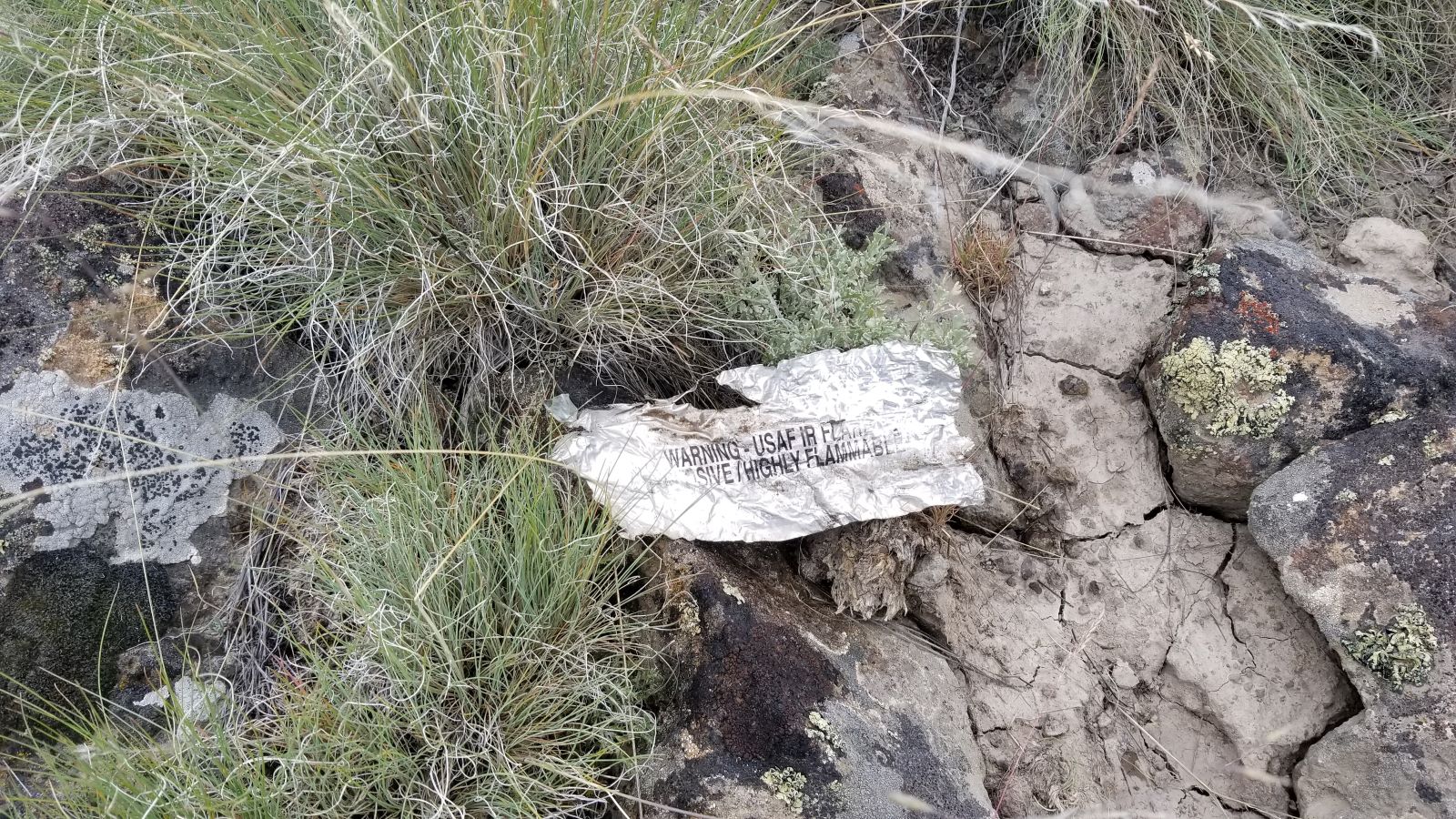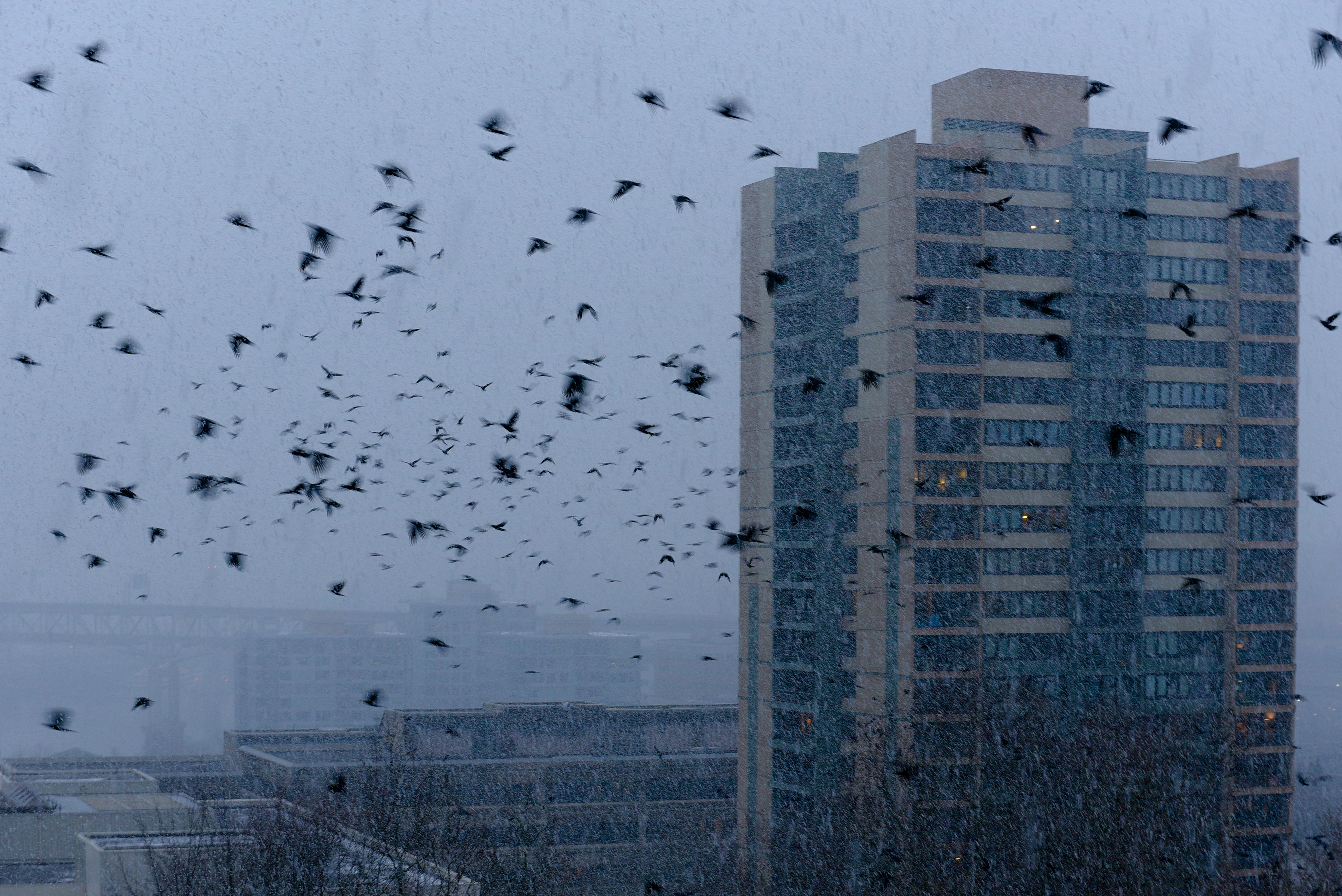In Oregon’s Owyhee Canyonlands, where the air is crisp and the land echoes with the whispers of the Oregon wilderness, a new and different kind of thunder rumbles. When F-15 fighter jets tear through the skies and leave behind a trail of pollution, it disturbs not just the harmonious melody of nature but also the environmental balance.
Beneath the wings of these machines, a lesser-known menace spreads—military chaff. As the cloud of aluminum-coated glass fibers settles over pristine landscapes, it brings with it a host of ecological challenges.
Radiofrequency chaff is an electronic countermeasure designed to reflect radar waves and obscure planes, ships and other assets from radar tracking sources. Chaff consists of aluminum-coated glass fibers ranging in lengths from 0.8 to 0.75 cm, according to a research article written by Captain Darryl P. Arfsten, a research biochemist at Naval Health Research Center Detachment.
Chaff are millions of dipoles, which are pairs of opposite electric charges. When released from military vehicles, these dipoles create a dispersed cloud that is invisible to the human eye. This cloud then scatters electromagnetic signals, making it difficult for radar systems to accurately detect and track targets.
Chaff is a very light material that can remain suspended in the air anywhere from 10 minutes to 10 hours. It can also travel considerable distances from its release point, depending on prevailing atmospheric conditions, according to Arfsten’s research.
“We are very concerned about the negative impacts that all of this expelled garbage will have on public lands, wildlife, and communities, and especially water quality,” stated Mark Salvo, Program Director of the Oregon Natural Desert Association (ONDA). The stakes are high, with potential threats looming over the delicate balance of ecosystems in the Owyhee Canyonlands.
The United States government estimates an annual release of at least 500 tons of military chaff as the Air Force intensifies its jet fighter training over the Owyhee Canyonlands.
This expansion, however, comes with a heavy cost to the environment. The roar of F-15 fighter jets—flying as low as 100 feet above the ground—disturbs the natural rhythm of the landscape, scattering sage grouse and panicking bighorn sheep and unsettling the local communities that rely on this land.
Long after the fighter jets are gone, the aluminum-coated glass fibers from chaff settle on the land, potentially threatening water quality and compromising river systems.
“Chaff and flares include pollutants that could degrade desert waters, kill fish and other aquatic life, and compromise riverine systems,” Salvo stated.
This raises a poignant question: are we sacrificing environmental integrity in pursuing military readiness?
In southeast Oregon, military drills cause potential environmental damage beyond just chaff. A string of wildfires, all attributed to human activity, prompted federal and state agencies to investigate possible links to military training exercises.
The Oregon Department of Forestry found a remnant of a military flare at one of the fire sites. The Oregon National Guard—responsible for using flares in self-defense training exercises—are facing allegations as investigators connect the dots between military flares and wildfire incidents.
The Oregon Public Broadcast details an investigation into the flare-caused wildfires, revealing a concentrated effort by federal and state agencies to understand the cause. While skepticism lingers within military circles, discovering a military flare remnant at the burn site has fueled suspicions.
Due to these concerns, the Oregon National Guard, the Navy and the Idaho National Guard are under scrutiny, raising questions about the true extent of military activities and their potential impact on the environment.
Amidst these revelations, the public responds with justified outrage. ONDA took a stand, filing litigation against the Air Force. This legal action seeks to halt the proposed low-altitude training over the Owyhee Canyonlands, demanding a comprehensive and well-informed public review of the environmental consequences.
“The National Environmental Policy Act is clear: federal agencies, including the Department of Defense, must comprehensively and publicly analyze the potential impacts of their decisionmaking on the environment and communities,” Salvo stated. “In this case, the Air Force has failed to do that. We are asking the federal court to require further research and consideration of their decision to expand and intensify jet fighter training in southeastern Oregon.”
The use of chaff by the military is widespread and extends across the U.S. According to a report compiled by the U.S. Government Accountability Office, the Air Force has approximately 39 designated training areas—or ranges—where they deploy chaff in the U.S. and off the coast. The Navy and Marine Corps have 14 ranges.
These ranges serve as critical training grounds, but the environmental consequences of chaff deployment cannot be ignored, especially in areas where communities reside in close proximity to the ranges.
Recent events—such as the mysterious blob captured on Texas radar on Jan. 30, 2024—highlight the real-time implications of chaff deployment and how pervasive it has become.
Meteorologists from the National Weather Service identified the anomaly as military chaff deployed during an exercise involving at least one of Texas’s 15 military installations. The viral nature of the radar imagery sparked discussions, ranging from conspiracy theories to genuine concerns about such deployments’ environmental and public health impact.
Over the past few years, FOX Weather has reported similar radar depictions in Utah, Arkansas, Florida and a host of other states.
The deployment of chaff by the U.S. military is a multifaceted issue with environmental, public health and community impact. The comprehensive overview presented in the reports and recent incidents, such as the radar anomaly in Texas, underscores the need for increased scrutiny and awareness surrounding chaff deployment.
As technology evolves and military training intensifies, it is imperative to balance national security needs and the preservation of our environment. The potential risks and consequences of chaff deployment demand further investigation, public discourse and responsible military practices to ensure a harmonious coexistence between national defense and environmental stewardship.






